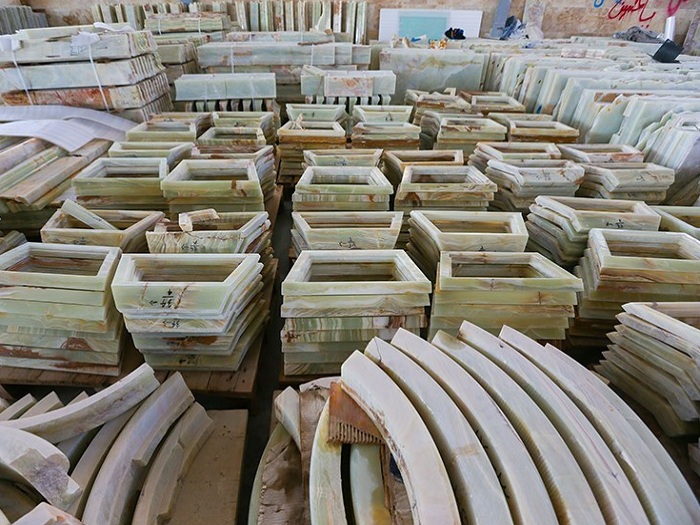Construction of Prophet Zahra columns in Sangestan Co.

Central Provincial Reconstruction Headquarters Headquarters: The number of Zahra courtyard columns to be built and dispatched in the Central Province was six hundred and four columns, some of them white marble and some green marble.
According to the International Stone Exhibition of Iran, Khalil Najafi Nizamabadi, referring to the development of the shrine of Ali ibn Abi Talib, said: The development of the shrine of Ali ibn Abi Talib (AS) is in progress and soon the court and shrine of Prophet Zahra (SA) ) Made and attached to the shrine.
He added: "It is the largest Shiite monument in the world after the Al-Haram Mosque, which covers an area of two hundred and twenty thousand square meters. The complex is built on three floors, the important part of which has been transferred to the central province."
The successor of the Central Province Religious Reconstruction Headquarters stated: Mahalat city had a special role in supplying the stone because of its mineral and god reserves.
Najafi noted: The people of the central province to rebuild the sanctuaries of four billion tomans and brought Sangestan company also six billion tomans, which in total 10 billion tomans from the people of the central province will help sanctuaries.
He said: The number of columns of the courtyard is six hundred and four columns, some of which are made of white marble and part of green marble, processing and implementation of each pillar seven million tomans.
The project started on September 1, 2009 and is expected to be built in a nine-month process, with three semi-finished column shipments to Najaf so far.
Najafi said that due to the beginning of the flooring of the apron it is necessary to send the pillar base as soon as possible, about seventy pillar posts have been shipped to date and we are increasing the equipment to complete the project within the specified timeframe.
He added: "The industry was institutionalized in Iran because it was not previously owned by artisans in the province, and with the support of local industry officials, we hope that the construction of other pillars in the province will also be given to the central province as it has good employment."
* Tasnim










